The Hammerstadt Charter Look And Feel
The information below is intended to be used to get a feel for the atmosphere of the nation and provide inspiration about what kinds of clothes, weapons and armour are common. Costume is aspirational, and attendees are not expected to have perfect kit from the start – instead we encourage everyone to put effort into improving their kit over time, starting with basics and adding to it bit by bit, and not criticise others costume. Advice should only be given when asked for.
The “Key Costume” for each nation is intended to be elements of national dress that help to identify the difference between nations, with pieces of clothing or themes which highlight that difference. A basic LARP shirt or tunic and trousers or skirt is all that is needed as base layers for every nation, plus some element of the Key Costume for the nation chosen as where that character is from. Everything else is a bonus – but it improves the look of the whole setting when everyone buys in to the world being played out and endeavour to look on brief for their own nation.
More information on the minimum costume standards and items which should be avoided in all nations is available here.
Nation Overview

The Hammerstadt Charter is home to a steadfast people, whose shared determination toppled two Kingdoms and created a city where hard work and ingenuity rule.
The people of Hammerstadt value conspicuous consumption – they are the fashionistas of the world of Menhirs Fate. In the city, clothes can be bought from tailors, bartered for in markets or fall off the back of a wagon. Base layers are never white – instead patterned or richly dyed cottons and linens are worn next to the skin; much better for not showing the dirt of the city, displaying personal style and making sure people don’t think you’re Portavian. Half-capes, voluminous trousers, opulent gathered skirts, wide-brimmed hats and laced bodices are all popular.
The fashion in the Hammerstadt Charter is inspired by 1600s-1650s European fashion – Musketeers, English Civil War, Witch-finding, and the multi-layered societies of fantasy cities.
Hammerstadt is a society where loyalties are worn openly, and quite literally, by the extensive use of tattoos. These might show pictorially an affiliation with a particular guild or Coterie, mark important moments in the wearer’s life, or show the terms of an agreement between business partners. Magical ink is used for the latter, which lasts as long as the contract. Because of this, clothing that can be undone to easily reveal a person’s affiliation is popular: sleeves with buttons all along the length and shirts that can show the neck. Gloves are removed if an agreement is to be had, to make sure there’s nothing up the other’s sleeve.
Colour Palette
Deep, dark colours, rich jewel tones.
Dark dyed linens and printed cottons, with velvets, shot silks and wools.

Themes And Key Words
Conspicuous consumption, colourful gangsters, fast fashion, change, city life, poverty and opulence, multi-layered society, The city of Hammerstadt is a balance between affiliation and individuality.
Hammerstadt is first and foremost a city, and one where invention and industry are most important. Their clothing reflects individual personality, but also Coterie and Syndicate allegiance, bargains struck between Coteries, and deals made between rivals. Unlike many nations, this is a place where more often than not, clothing is purchased by the wearer, not made. There are streets of Haberdasherers, Tailors and Dressmakers in all five districts, offering a wide range of options to suit all budgets, although some of those may have had more than one careful owner, and the damage left by the previous wearer very tidily repaired…
Base layers are never white in Hammerstadt – “why look like a Portavan when you have all the industry of the five districts on your doorstep?” is a common phrase. Dark plain cotton or linen is common, but printed cottons, made in the great mills of Hammerplatz are very fashionable.
Clothing in Hammerstadt is primarily workwear, it generally suits the needs of the wearer’s profession and It pays to advertise. Printed fabrics that hint at the wearer’s occupation are common in some quarters – a design of swimming fish for a fishmonger, flowers for a florist, stars for a mage1 – while others simply wear what patterns appeal to their sense of style.
Both armour and clothing styles are inspired by the 1600s Western European fashion, with versatile button-up layers, a wide variety of hats, tailoring to the natural waist and a certain amount of dashing sophistication.

Fantasy Inspiration
Multifaceted fantasy cities, full of grime and crime, with the highest echelons of society and the lowest of the low living streets apart.
Gang culture and the dark underbelly of city life, alongside the fast-paced progress of industry and invention.

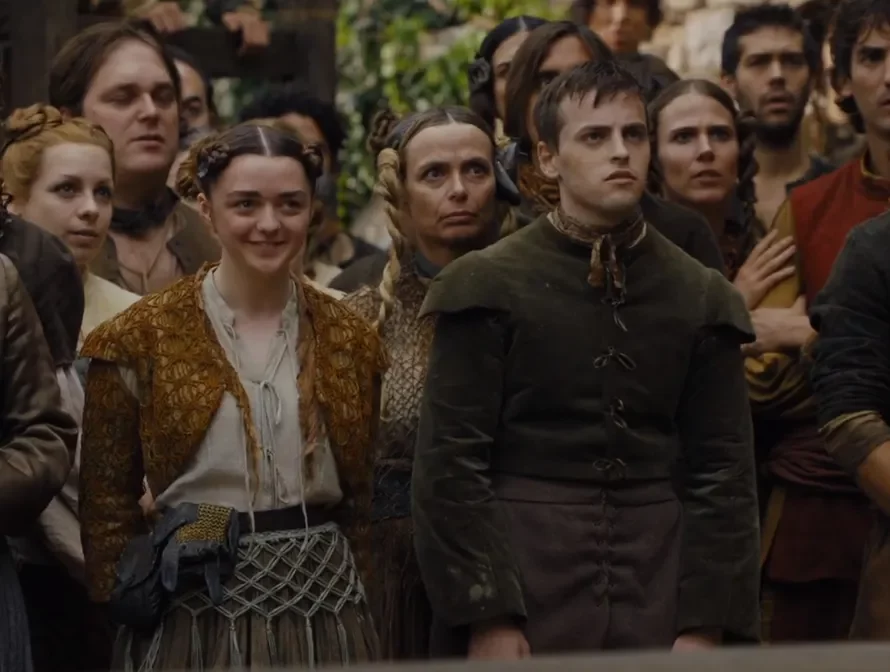
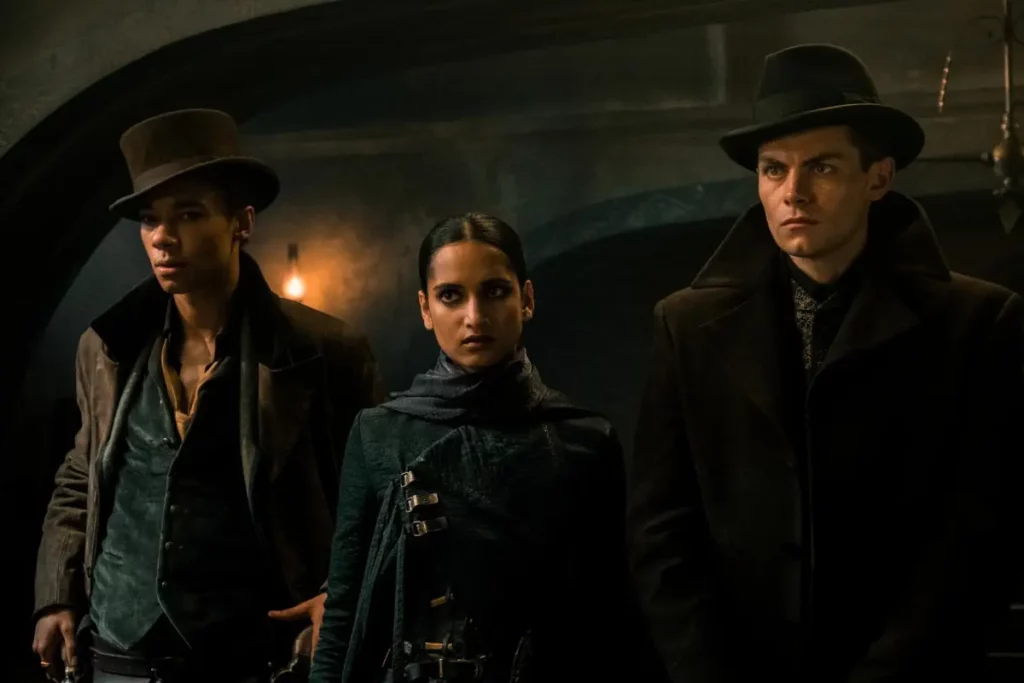

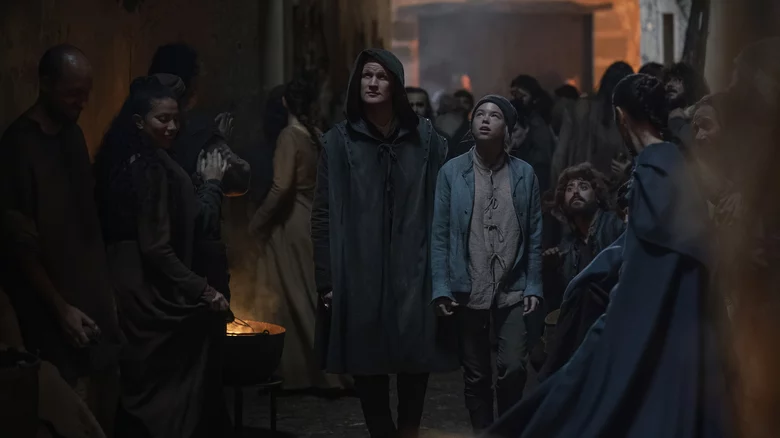

Historical Inspiration
The main inspiration historically for Hammerstadt is the 17th Century in Europe. Examples of these clothing styles can be found in various popular media:
- The Three Musketeers – 1620s European fashion and the media that was inspired by it. The dozens of interpretations of Dumas’ work go in really fun and interesting directions we can draw from.
- The English Civil Wars – spanning the 1640s-50s, and films and other media based in it.
- Witch Trials, Guy Fawkes and other themes from this period based in the fast-changing world and differences in worldview. Hammerstadt is the result of schisms on both magical and political worldviews.
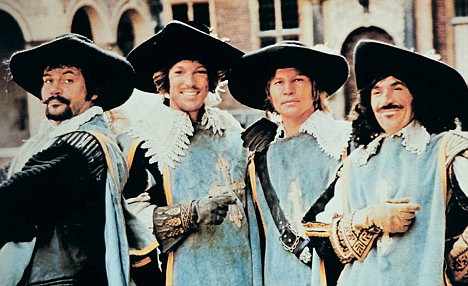





Headwear In Hammerstadt
Hats are more enthusiastically worn in Hammerstadt than in any other nation. The wide-brimmed felt or leather hat is most common, but the way these are styled varied from person to person, coterie to coterie and district to district.
These hats are commonly left flat or pinned up on one or three sides, to form a cavalier-style hat or tricorn. Some are decorated with feathers, ribbons and sashes.
Fabric caps and scarves are frequently worn, especially to keep hair out of the face when working.



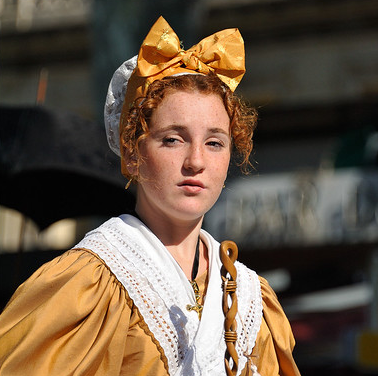


Key Costume Items for Hammerstadt
Key Costume Items are elements of the Look and Feel of each nation that are a cultural part of what makes up that nation, informed by their history and societal norms. Ideally, an outfit for any nation should aim to incorporate at least one of the Key Costume Items to ensure that characters are recognisably from their nation at a distance!
Key Costume Item – Tattoos
Tattoos denote Coterie membership and affiliation, and are a person’s primary identifier in the city. Commonly these are in illustrative styles that have an association with the individual’s business, eg. a rolling pin for a member of a coterie of bakers, an anvil for a blacksmith, a sword for a member of the Zweihanders of the City Guard.
This is also a way of signifying group affiliation, with Coteries in attendance being able to be recognised by a shared tattoo.
The idea is of “wearing your identity on your sleeve”, without historical negative associations with tattooing. Every member of this society, old to young, rich and poor, has some variety of tattoo on their body, and often on their arms, neck or face so as to be visible to all those who see them.
These can be created with makeup or facepaint, transfer tattoos, or using rubber stamps with facepaint. Faux skin sleeves can also be bought or made from tights and other skin-tone mesh fabric, which can be reused once made.






Key Costume Item – Split Sleeves
The prevalence of tattoos has influenced Hammerstadt fashion – sleeves that button or otherwise fasten so that the arm can be quickly uncovered to show off a forearm tattoo signifying a particular agreement struck are very common.
These can be made from second-hand coats and jackets quite easily, by splitting the sleeve up the inner arm seam and sewing the seam open. Buttons and buttonholes or loops can be added to finish off this style, or left to hang open and show off the layers undeneath.

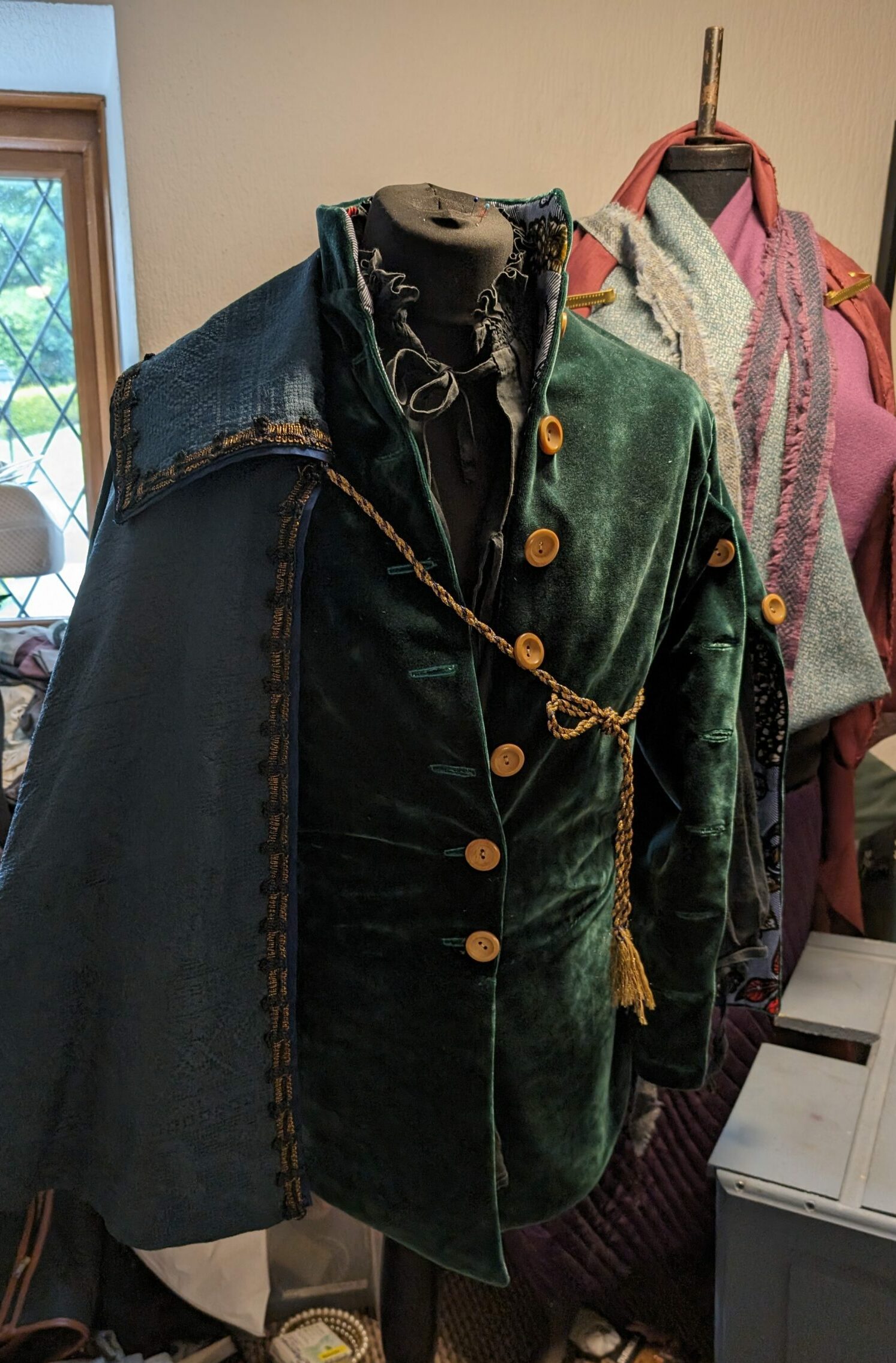




Armour For Hammerstadt
Armour for Hammerstadt is largely influenced by 1700s armour, and has some similarities to Portavan armour.
Light and Medium Armour
- Thick leather armour is worn in the style of buff coats, which can be with or without sleeves for medium armour.
- Leather gloves and aprons are worn by those who often use them for their craft, particularly Forge Mages.
- Lighter leather jerkins and bodices are a way of mixing fashion and armour.
- Padded armour such as gambesons and arming jacks are worn, but usually in such a way that shows off the personal style of the wearer, with more fashionable sleeves on display.
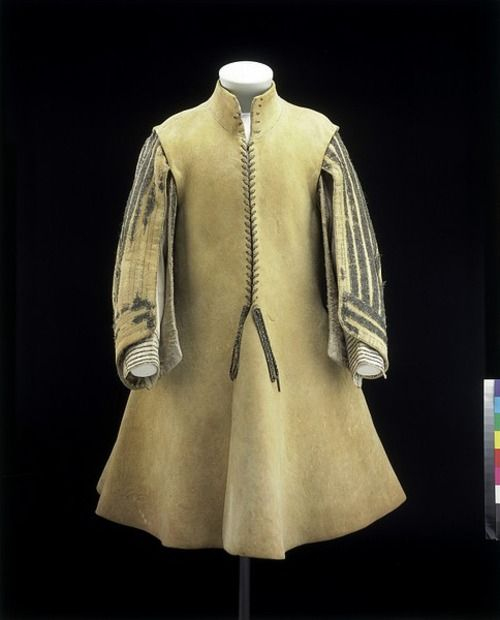
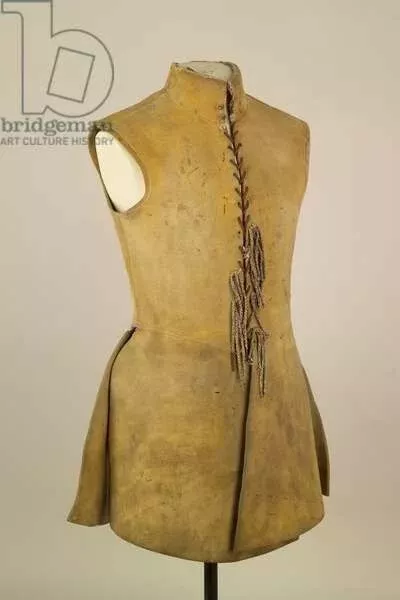




Heavy Armour
- Plate armour, especially breastplates, gorgets, tassets, pauldrons and gauntlets
- Chainmail is also worn but less commonly – some occupations such as butchers make use of it in their daily life.
- Brigandines, made up of metal (or other material) plates riveted to a fabric or leather exterior are also popular, being easier to make in small workshops out of scraps from other industries.
- Other more fantastical materials for plate armour than metal are found in some districts, made of reagents harvested by the Urdrevan and traded to the city.

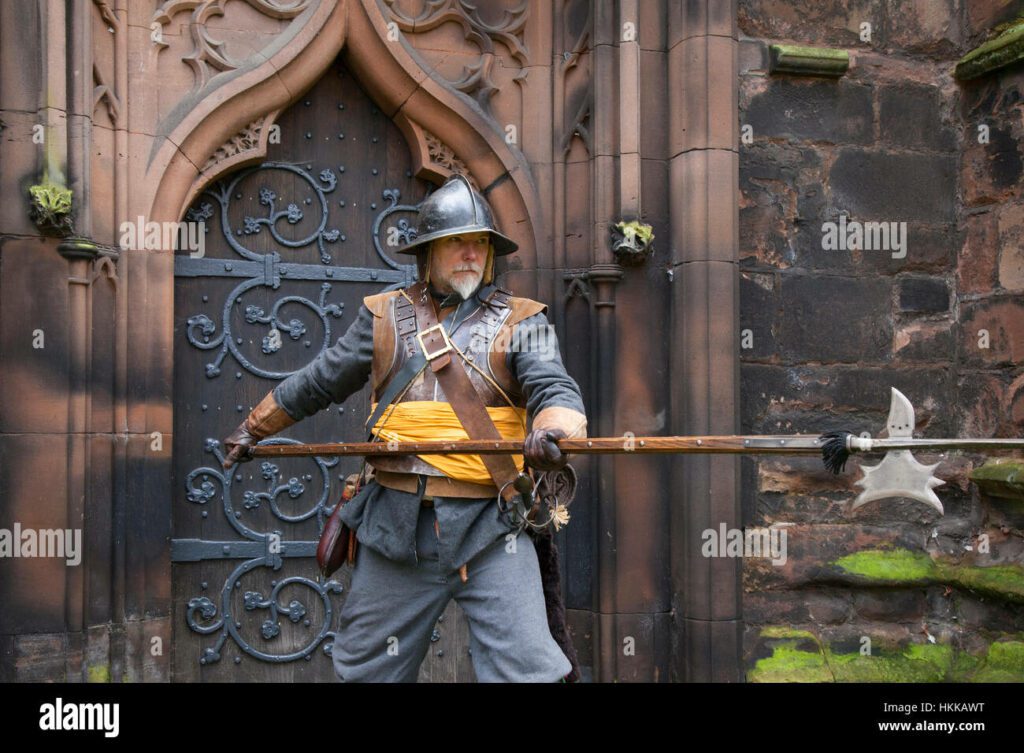

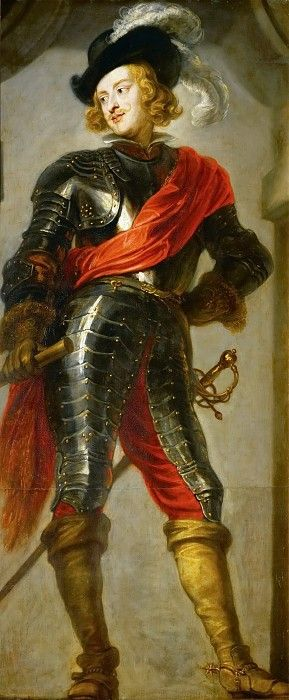

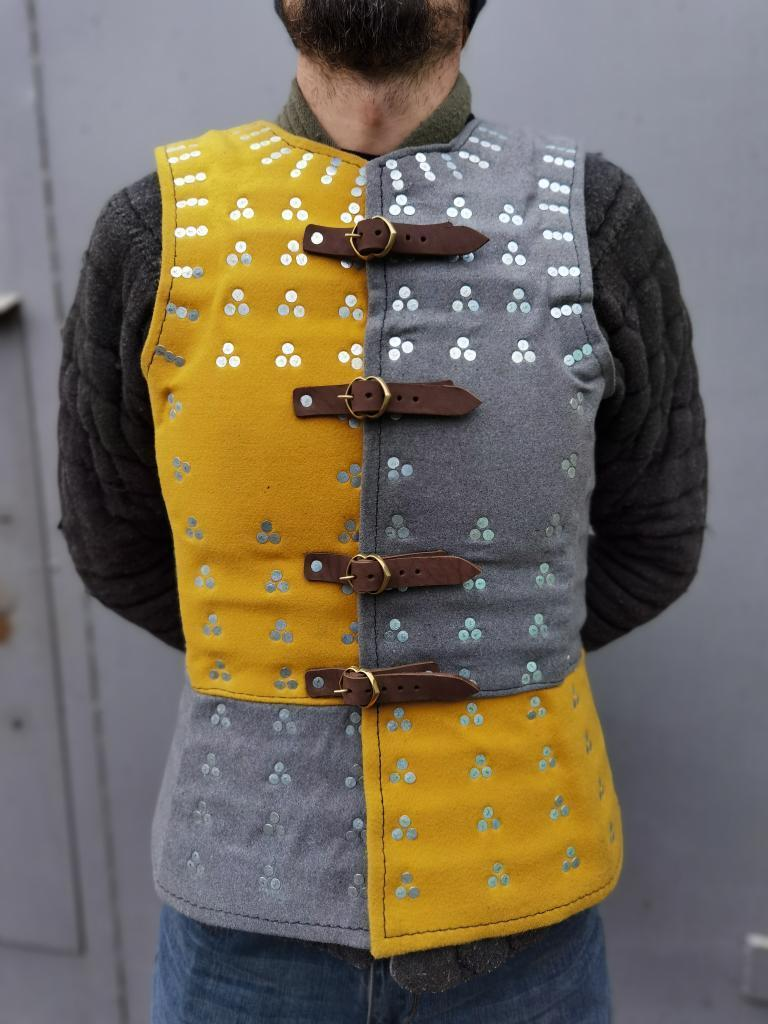
Helmets
The most common forms of helmet are:
- Simple round helms that can be worn under hats.
- Morian helmets.
- Conquistador helmets.
- Lobster-tail pot helmets.
- Burgonet helmets.
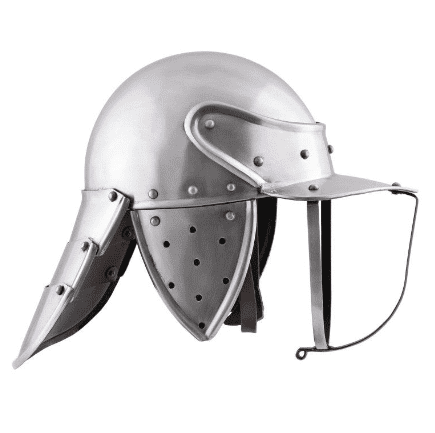




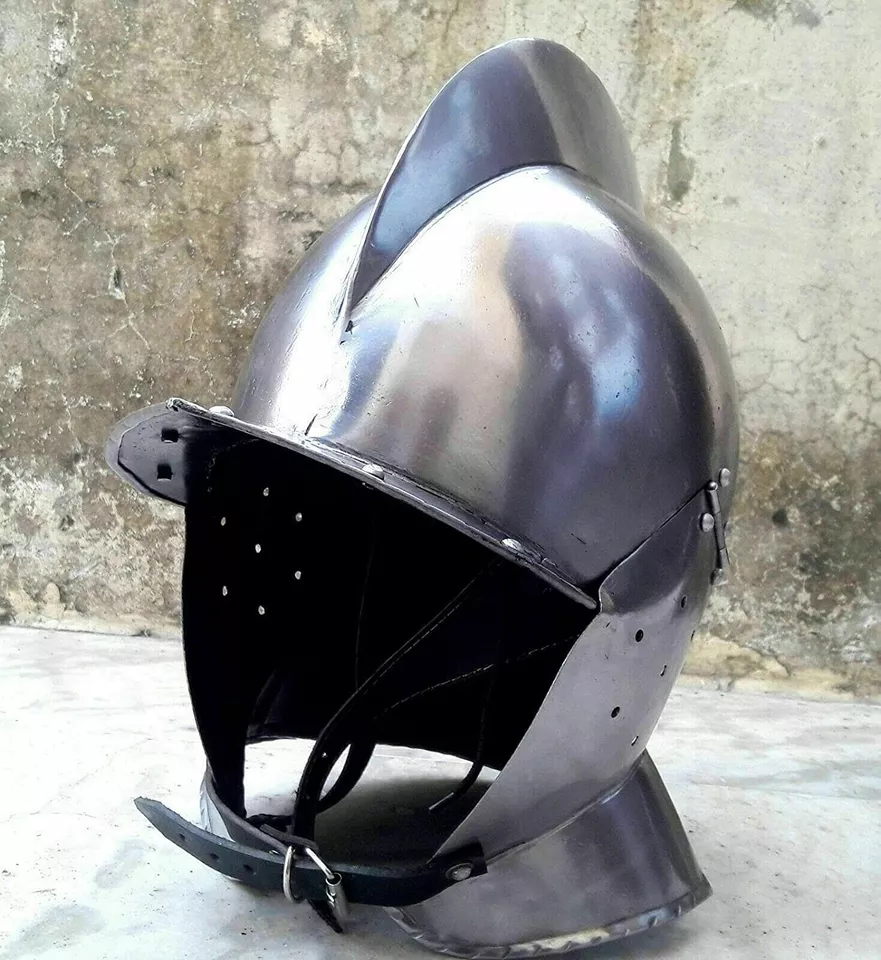
Weapons In Hammerstadt
In Hammerstadt, it is common for the sidearm worn daily by citizens for self-defence to be that which they are most familiar with – the tool of their trade. Common examples are:
- Hammers, tongs, mallets, wrenches and other craft tools.
- Carving knives, rolling pins, meat tenderisers and other culinary tools.
- Scissors, amputation saws, canes and other occupational tools.
Note – Please consider whether these would reasonable as a day to day tool that is seriously used as a sidearm in this way, and not a comedy prop. Larp-safe food and drink items, even with knives included in their makeup are not appropriate and would not be able to do damage in the same way that a saw, rod or mallet can under the rules of Menhirs Fate.
- Shields are rarely used in Hammerstadt – members of the City Guard are generally referred to as “Zweihanders” as a pun due to the two-handed weapons they favour and their central base camp in the district of Zweiburg.
- Long weapons – Halberds, poleaxes and bardiches.
- Two-handed hammers and spears, especially by those who are not professional warriors.
- Rapiers are a common sidearm used by those wishing to signify that they are not a craftsperson or tradesperson, but a professional in their martial skills.
- Crossbows are favoured as patriotic over shortbows or longbows, as the finest crossbows are made in the city.



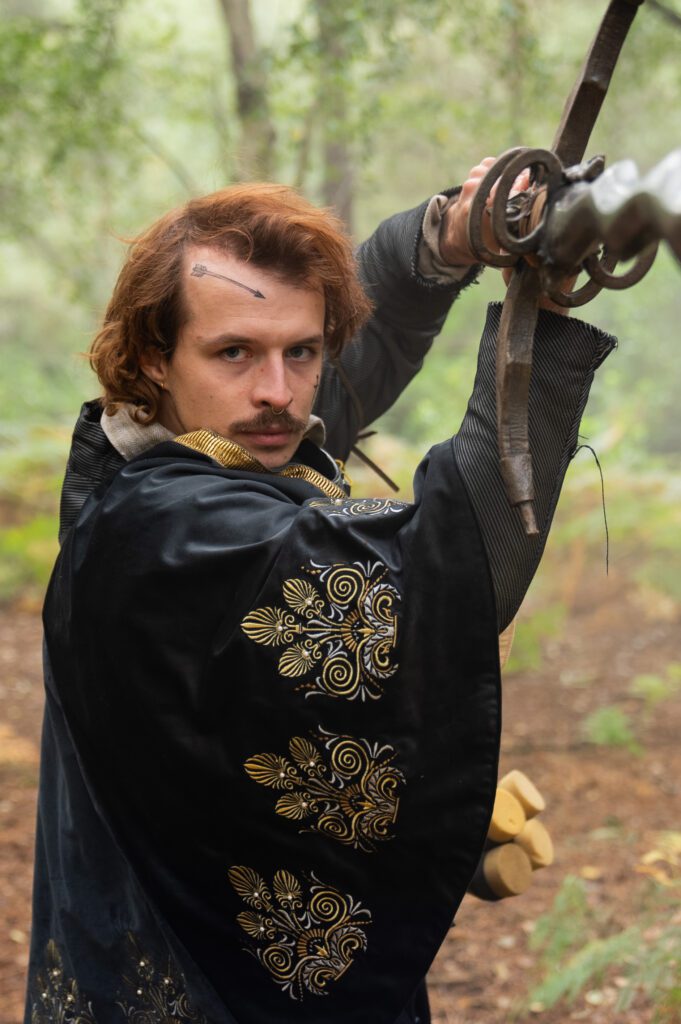


Archetypes In Hammerstadt
Archetypes are particular types of character in each nation, which offer a framework of the default types of mage, priest, warrior, artisan etc within that culture, and a way to think about designing a character who fits into the nation as a starting point, in order to encourage a cohesive nation that can make choices about individuality from that point.
These are by no means exhaustive, but the examples below depict some flavours of common character types and the costume elements that are often worn by them.

Scarsmiths
Coteries often send a member or two to the Syndicate of Surgeons to learn basic surgery, in case of industrial accident or common brawl. Some of these consider themselves Scarsmiths, others simply keep the knowledge in their back pocket in case of emergency.
Scarsmiths are Street Surgeons; battlephysicks who often appear during public fights and take pride in providing medical care that leads to the best possible scars, for a fee. Many can be found on the Rispetto Way, vying for business.
They can usually be picked out from other citizens by the artful splatter of blood on their aprons. Others choose to advertise their services by proving their scar-smithing is done with delicacy and beauty, by displaying their own work on their faces as scarification in the place of or alongside Coterie tattoos.

Zweihanders
Once the rival orders of soldiers, warring on behalf of the King of Hammerplatz and the Queen of Zweiburg, since the civil war ended they have reformed into a collection of soldiers under the Lawkeeper’s Guild, an organisation that now extends to every nation. Inside the city, they are beholden to the Syndicate of Art and War, and are expected to come to the defence of the city when the bells toll.
Zweihanders are identifiable by their choice of weaponry – usually a two handed sword, halberd or crossbow, but also tend to wear a degree of armour day-to-day to advertise their profession. Unless employed long-term by another syndicate, they tend to display the symbol of the sword on their faces. Their clothing is sometimes flamboyant, all the better to intimidate criminals and stand out, and a common way to spend extra money from bounties on the side of regular day to day work.
Due to their skills being in demand across Ellandra, it is not uncommon for Zweihanders to travel to other nations for a time, working as town guards and bounty hunters under the purview of the Lawkeeper’s Guild.

Scrags
Scrags are fighters for hire who are volunteer for the nation, either non-affiliated with syndica and vying for recognition or apprentices in a Coterie who can direct their energy toward the civic good, rather than bringing their Coterie into disrepute through brawling and other criminal activity. Many Coteries insist their apprentices serve as Scrags for a year or more as part of their apprenticeship, to prove they can be trusted with civic responsibility.
This is part of a Syndica-sponsored method of conflict resolution to prevent small fights becoming brawls or riots – keeping the peace by directing fights toward the Rispetto Way, or setting up small, organised fights if not in Hammerstadt itself. This is a common way for poor members of society to start out – on the whole Scrags are largely poor, unless they really enjoy serving their community.
Scrags are a mixed bunch, some entirely without armour, others sponsored by their Coteries with the best their armourers can make. They are outfitted in whatever they can put together, and most of the time being warm and dry is more important than being well-armoured!
How To Put Together a Hammerstadt Outfit
- A baggy-sleeved shirt, blouse or dress, in patterned or dyed cotton or linen.
- A tailored mid layer – a doublet or bodice that creates the silhouette, with a natural waistline, buckled, laced or buttoned at the front.
- Baggy trousers or gathered skirts with a lot of volume, or a mixture of the two worn together.
- Skirts can also be hitched up with skirt hikes, or tucked into the belt to give more movement to the wearer.
- The standard cut of trousers is below the knee breeches with some bagginess to allow for movement, but narrower and baggier styles also work. Longer trousers can be tucked into boots to create the same effect.
- If knee breeches are worn, the can be pared with long socks or stockings for warmth and to add more colour to an outfit.
- A big, wide-brimmed hat, with a lot of space for decoration with feathers, flowers, ribbons and sashes, or some sort of indication of the trade of the wearer.
- A cloak, either full style, hooded or half-cape over one shoulder.
- An overcoat with slit sleeves, which can be made from a second-hand leather coat by cutting the inner arm seam from the wrist to the armpit, and sewing the seam open.









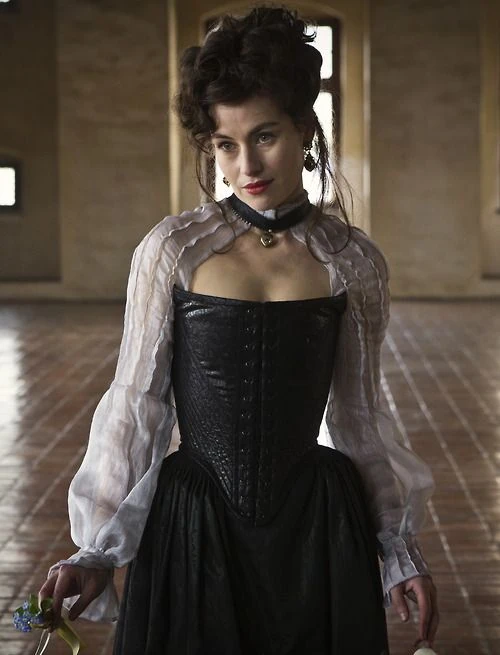

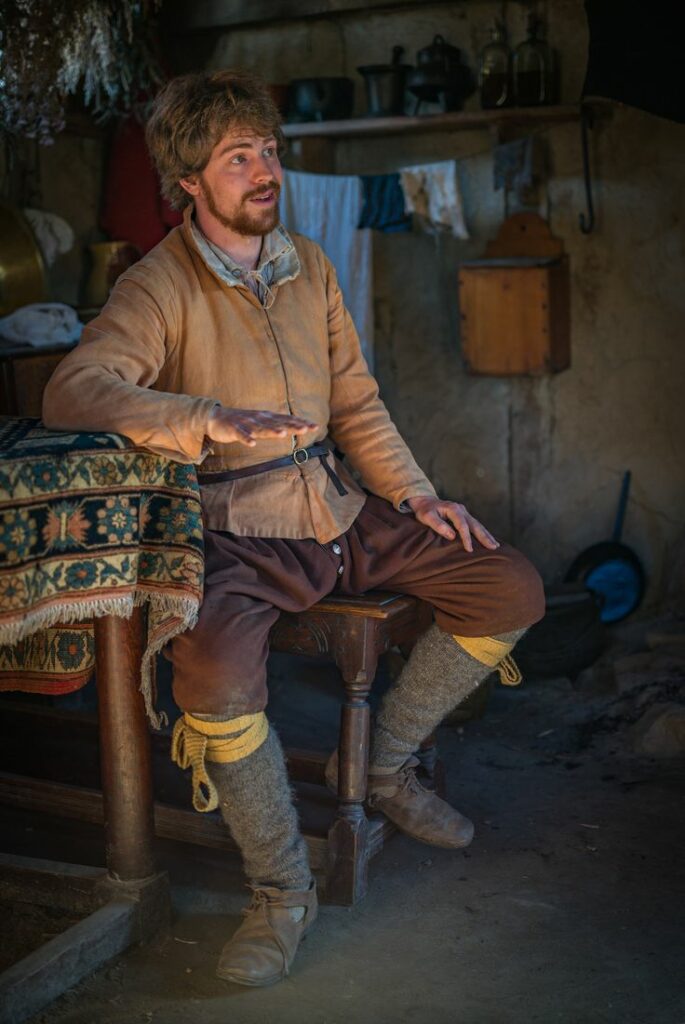




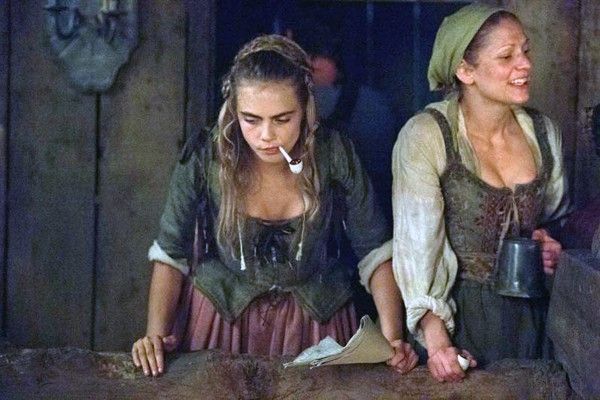

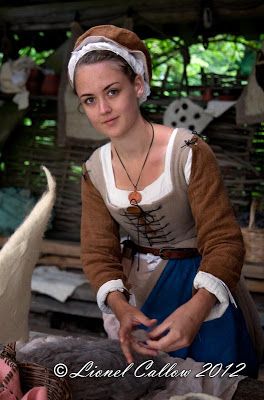





- When choosing these patterns, consider if they look overly modern. Digital prints can work, but styles that evoke hand-printed or early industrial patterns are best. ↩︎



